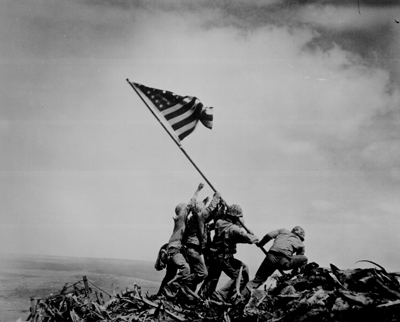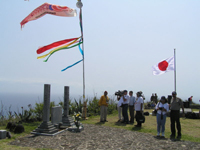Languages
![]() English
English
![]() Spanish
Spanish
![]() French
French
![]() German
German
![]() Latin
Latin
![]() Chinese
Chinese
![]() Japanese
Japanese
Other Topics
![]() Translation prices
Translation prices
![]() Machine translation
Machine translation
![]() Harry Potter
Harry Potter
![]() Translation quotes
Translation quotes
![]() Conversionzauber
Conversionzauber
Search
Advertisement
Iwo Jima No More


This little Japanese island, recently made famous again by the two Clint Eastwood movies Flags of our Fathers and Letters from Iwo Jima was renamed Ioto officially on September 1, 2007. Though the meaning of its name, "Sulfur Island", remained the same, the pronunciation changed.

The reasons for the name change have to do with the history of the island, which was by its native inhabitants before World War II called Ioto, and was never by any Japanese called Iwo Jima. Since the end of the war the island has been uninhabited, remaining first a U.S. territory, and more recently a Japanese territory of military and historical significance.

(Rosenthal / Associated Press)
Memorials and reunions have been held on Iwo Jima in the years since WWII. In 2006 several widows of Japanese soldiers who fought and died there were allowed to visit the island and pay their respects to their deceased family members. The event was covered widely in the Japanese media, but the island got relatively little attention until Clint Eastwood made his movies.
 The two movies vividly depict the battle for the island from both perspectives, the Japanese Imperial Army and the U.S. military. In either case, the bloody, ugly, and agonizing truth of warfare is there to be seen, along with the story behind the famous photo (see above), and now statues, of American soldiers raising a flag on the island.
The two movies vividly depict the battle for the island from both perspectives, the Japanese Imperial Army and the U.S. military. In either case, the bloody, ugly, and agonizing truth of warfare is there to be seen, along with the story behind the famous photo (see above), and now statues, of American soldiers raising a flag on the island.
But the name "iwo-jima" is just wrong. The actual pronunciation is “iō-jima” (ee-oo-jima, long "o" sound, sometimes romanized as "ou"), but the "w”" got added in WWII due to how Japanese was romanized back then. There are two ways of writing "o" in Japanese kana script, one of which is used only for grammatical purposes. By the conventions of romanization in the 1940s, that "o" was written "wo" to help foreign learners of the language. But it was also applied to help all foreigners deal with combinations of vowels, like "i-o" that otherwise would be mispronounced. There is no "w" sound in the "i-o" of Iwo Jima and never has been.
So the romanization stuck, giving a couple of generations of Americans the wrong pronunciation. The "jima" part simply means "island" and is from the word "shima" (meaning island of course). The "s" sound changes to a "j" for phonetic reasons, though not always. There are plenty of islands in Japan that are named with "shima" at the end: Oshima, for instance.
But the character for "shima" (島) is also pronounced "tō" (long “o” sound, sometimes romanized as "tou"), and so the new name for Iwo Jima is going to be Iotō, written with the same characters as always. Because the characters have not changed, the meaning of the name of the island remains the same: Sulfur Island.
So the way you write the island’s name did not change: 硫黄島. But the way it's pronounced (read as we often way when talking about Japanese characters) did, as of September 1, 2007.



